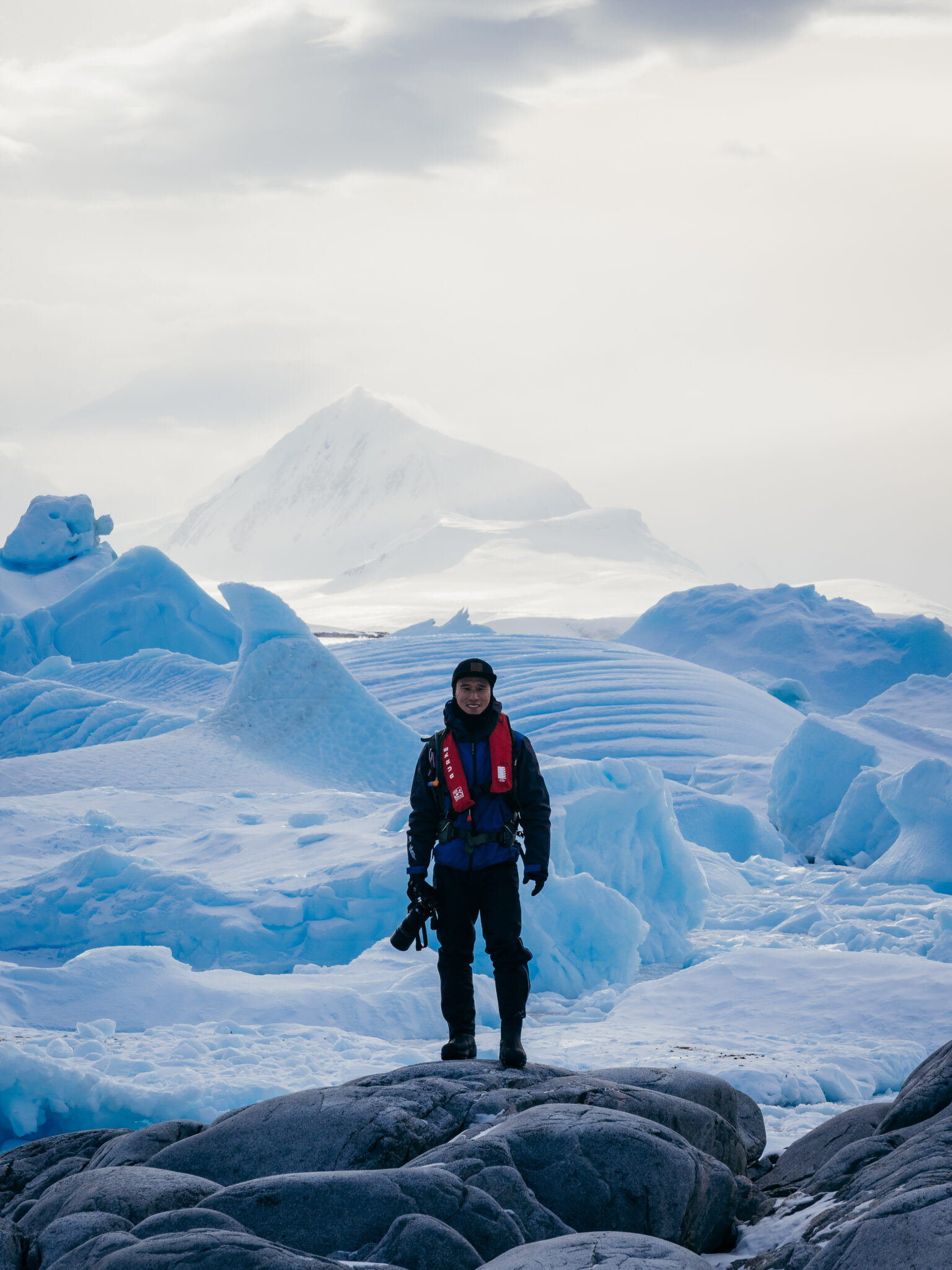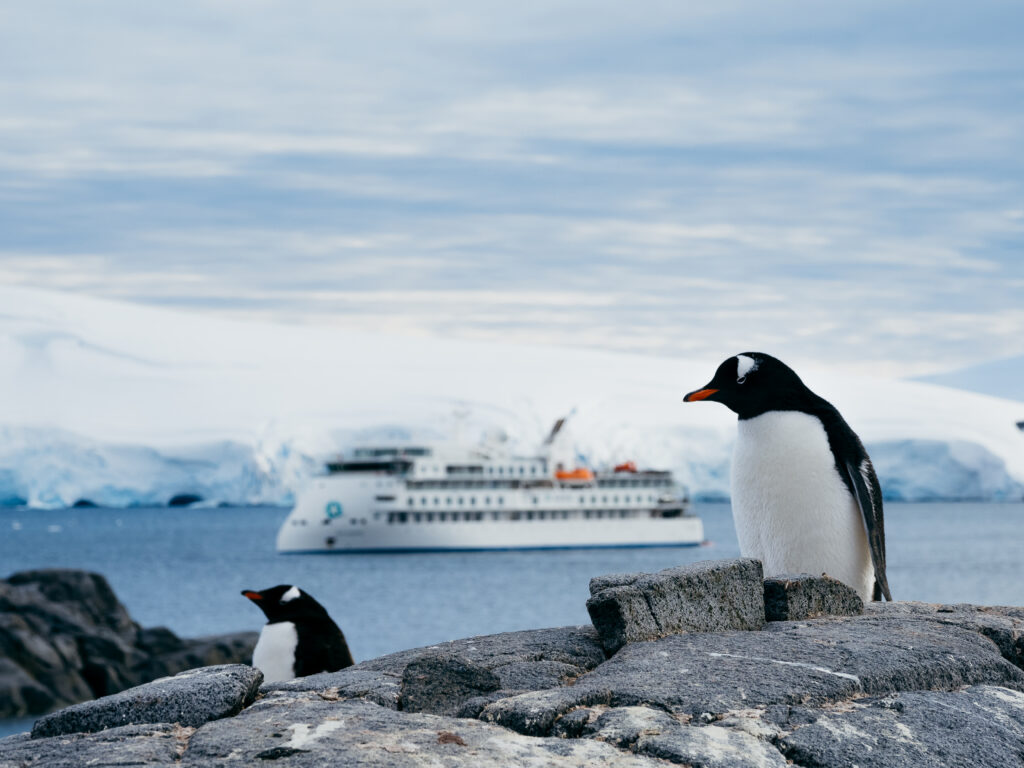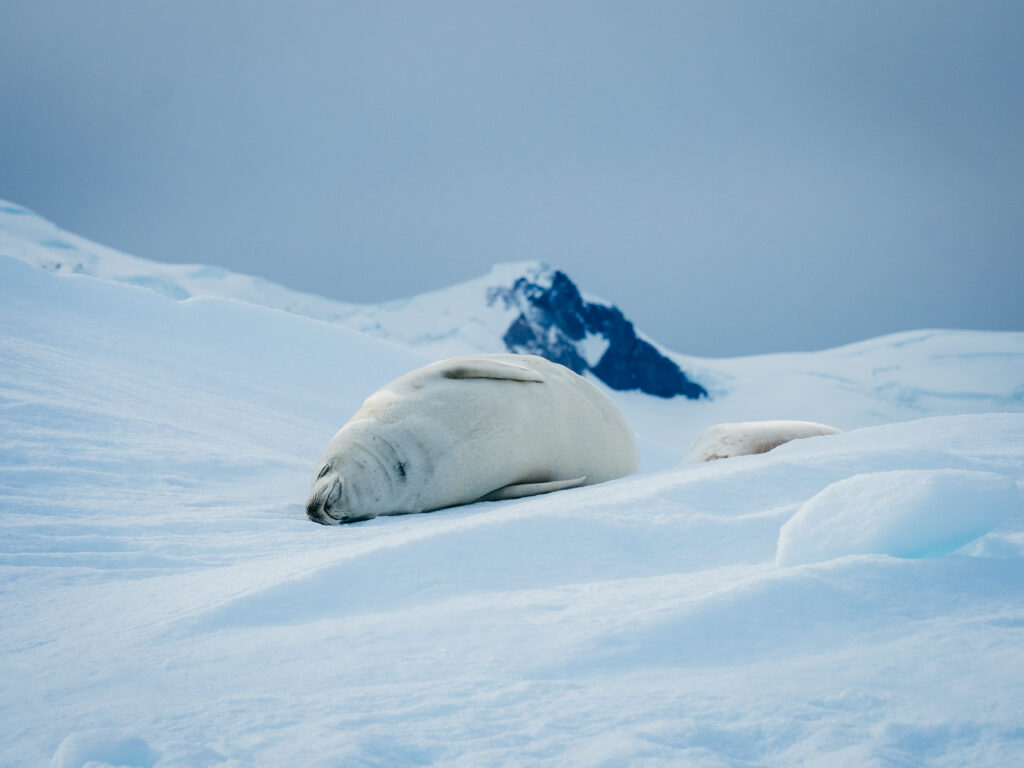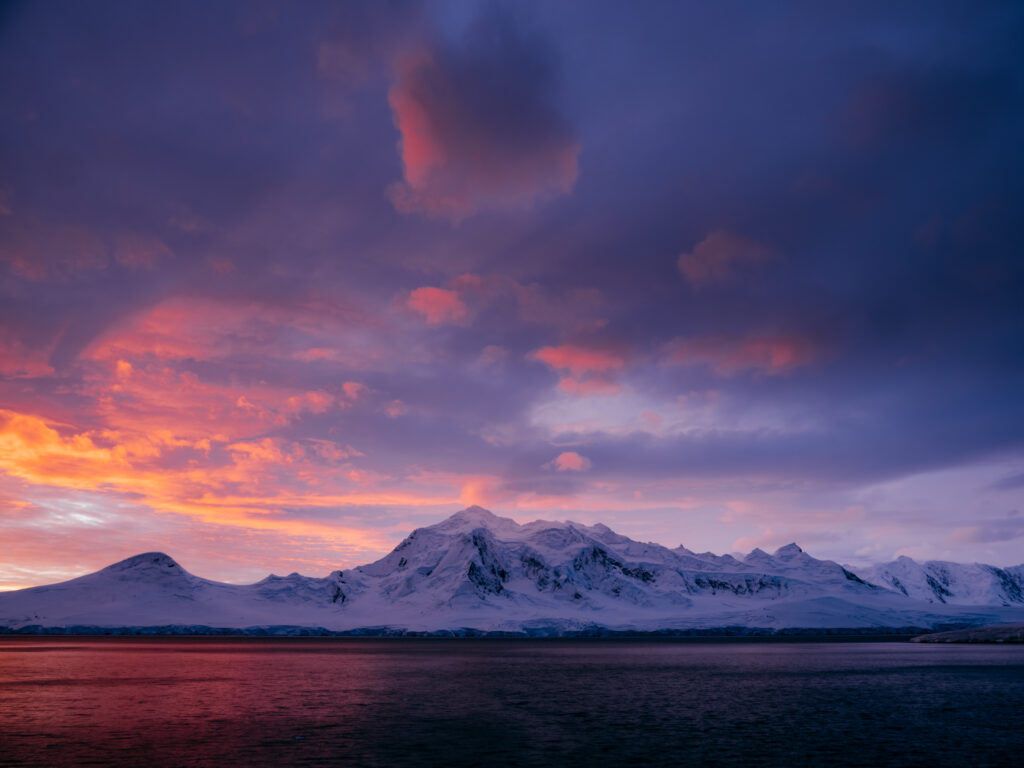In addition to being an Official Ambassador for Olympus and Aurora Expeditions Photography Guide, Matt Horspool is an intrepid adventurer who has travelled the world seeking stories to curate with his lens.
His love for the natural world, nurtured by the pages of National Geographic magazines, kindled a passion that led him to the world’s most remote corners, eventually taking him to the polar regions. Matt’s diverse portfolio mirrors his profound connection with the Earth’s beauty, and he relishes sharing the joys and challenges of each genre with the world.
We caught up with Matt to find out more about his photographic pursuits, from capturing the grandeur of landscapes to wildlife photography, and to discover how equipment plays a pivotal role in his craft and why choosing the right gear is paramount, especially in the polar regions.
I've never been one to photograph landscapes or only photograph people. I absolutely love it all, right down to shooting weddings (especially those in Antarctica), and the skillsets I've learnt from broadening my photographic projects have drastically helped in other aspects of my creative work.
Matt Horspool

How did you get started in photography, and what motivated you to pursue it professionally?
Growing up, I’d always been fascinated by the images in my parent’s extensive collection of National Geographic magazines. I knew I had to witness these incredible places myself when I got older. In 2009, after I graduated from university, I set off on a 22-day trek through the Peruvian Andes led by Simon Yates. It was here that my love for adventure, mountains and remote landscapes was born. I’d taken my first camera with me on this trip – a small point-and-shoot – and had enjoyed capturing shots of myself and others in the group against towering snow-capped peaks. However, it was during my 3.5-year adventure around the world that my thirst for travel photography really took shape.
After my travels, I returned to full-time school teaching, picking up a handful of small photography jobs on the side. It wasn’t until 2017 when my good mate and I won an Olympus grant to fulfil a passion project that entailed driving across remote Kyrgyzstan and Tajikistan and documenting what we saw that my professional photography career really took off.
What types of subjects or scenes do you enjoy photographing the most, and why?
When people look at my work, they immediately comment on how diverse it is. I’ve never been one to photograph landscapes or only photograph people. I absolutely love it all, right down to shooting weddings (especially those in Antarctica), and the skillsets I’ve learnt from broadening my photographic projects have drastically helped in other aspects of my creative work. There is, however, something truly fulfilling about photographing wildlife. The patience, timing and good amount of luck you need to capture a great wildlife image is an art form. I love that I have no control over what the animal is doing or where it will be or how it’s placed within a composition. It really is a game and an incredibly rewarding one when you win!

How important is equipment to how you work?
The idea that equipment is the be-all and end-all of capturing great images is an ideology that social media and camera companies will lead you to believe. And to some extent, it’s true, particularly when you’ve mastered the basics and are looking to push your skills even further in increasingly challenging environments. A great example is working in polar regions where the weather can change at the drop of a hat, but to fulfil a role as an expedition photographer, you can’t let that stop you.
I’m fortunate to be sponsored by OM SYSTEM / Olympus, as their equipment features class-leading weather sealing and is freezeproof, perfect for polar photography. I love working with telephoto and super telephoto lenses up to 2000mm (35mm equiv) in polar regions. It allows me to zoom into wildlife and icebergs that would be too dangerous to photograph up close. While modern smartphones are becoming very good at their computational abilities to digitally zoom right in, it, unfortunately, doesn’t make up for the lack of sensor size and less-than-desirable ergonomics in a professional environment.
There is something truly fulfilling about photographing wildlife. The patience, timing and good amount of luck you need to capture a great wildlife image is an art form. I love that I have no control over what the animal is doing or where it will be or how it’s placed within a composition. It really is a game and an incredibly rewarding one when you win!
Matt Horspool

What are your biggest accomplishments, both personally and professionally?
Without a doubt, my most significant professional accomplishment was taking the leap from full-time teaching to full-time photography and filmmaking. I’ve always been quite headstrong, and when I want something, I do everything I can to make it happen. Looking back, I’m content with the sacrifices I made over the past five or so years to knuckle down and perfect my craft, which often fell at the expense of my social life. But it really has paid off.
Honestly, there aren’t too many jobs where you are so excited to perform them that you can’t sleep for a week beforehand.
On a personal level, I’m the proud father of two beautiful little girls and have the most amazing and supportive partner that allows me to head off overseas for weeks to chase my dreams. As any parent of young kids knows, it’s a bloody tough gig, and just getting up each morning is hard enough, but I can’t wait to take them on global adventures!
What is the most memorable project you've worked on?
Every project is unique; however, circling back to the Olympus Vision Project in Central Asia, this was undoubtedly one of the most fulfilling projects I’ve completed. At the time, there was very little information about the areas we wanted to visit, let alone navigating the dangerous roads ourselves. We produced the whole project, which was a take-it-as-it-comes kind of situation. Nevertheless, we knew this was special when we arrived and saw the grandeur of the 7000m+ peaks mixed in with some of the most pristine and untouched valleys and lakes we’d ever seen. The experience of living with nomadic people in their family yurts tucked away in some of the most remote parts of the planet is an experience money can’t buy. The photographs we captured there formed the platform on which my career stands today.

What are some of the challenges of shooting in difficult settings or conditions?
This depends on your purpose for being in that particular setting. Suppose it’s a commercial shoot, or I’m guiding on an expedition. In that case, the situations I might deem insignificant as a passenger or member of the public are amplified by the pressure of fulfilling the client’s brief. There is only so much pre-planning and preparation you can do before heading off on a travel shoot, and you must be prepared for anything. This is why it’s always best to get out and practice with your equipment in various photographic situations so you can quickly and easily navigate menus, change settings, and understand the limitations of your equipment. I can now navigate my camera without thinking and promptly adjust autofocus tracking settings to instantly suit changing wildlife behaviours.
Looking for more inspiration?
If you need more reasons to get yourself and your camera to the polar regions, watch Matt Horspool’s short film below. It’s made up of clips he stole in between stills, when he was on the Antarctic Peninsula and the Falklands~Malvinas earlier this year as a Photography Guide.
Featured Voyages
Antarctic Explorer
Expedition
Welcome to Aurora Expeditions’ Antarctic Explorer Fly/Sail expedition. Early Antarctic explorers returned from their voyages to the deep south with tales of a magnificent, ice-covered land teeming with life. Experience the...
12-13 Days
From USD $14,621.25/pp
Falklands, South Georgia & Antarctic Peninsula
Expedition
Welcome to Aurora Expeditions’ Falklands, South Georgia & Antarctic Peninsula expedition. This epic voyage takes you on an incomparable journey, visiting enigmatic Subantarctic islands and the Antarctic Peninsula. Similar to the...
21-23 Days
From USD $22,396.00/pp

